Steelhead are not native to Lake Superior. They have, however, made their homes in the great lake and its tributaries since the late 1800’s, and in the minds of many local anglers, this fabricated fishery was designed as a simple two-stage process: put and take. For others of us, it’s a more nuanced affair.
The states of Michigan, Wisconsin, and Minnesota each stock the lake’s watershed with young rainbow trout. The State of Michigan, for instance, plants rainbows in nine of the Upper Peninsula tributaries of Lake Superior: about 100,000 seven-inch fish in the spring; about 500,000 three-inch fish in the fall. Many of these fish die before reaching the big lake. They are, after all, the perfect bite-sized treat for many of the pike, otters, hawks, and eagles that patrol those streams. Others, though, make it out to grow large and powerful in the dark depths of Superior, and one day they respond to a genetic force that tugs them back toward moving water. Some of those return to the place where they were planted, but the mavericks among them are drawn to creeks and streams they’ve never seen. Once there, they plant the seeds of a new generation. Those fish—the ones that are born according to a plan that didn’t need approval from a horde of Lansing bureaucrats—are the ones that I adore.
Despite its natural beauty and allure, Michigan’s Upper Peninsula is a harsh environment. The hardy men and women who lay roots in its towns and villages are in many ways similar to the authority-defying steelhead that populate its rivers. The motives for living in the U.P. are as diverse as the people who reside there, but if you needed one succinct explanation for why they are there, it would come from one of the peninsula’s most accomplished natives. The Life Magazine photographer Bob Kelley once asked John Voelker what magical lure there was about trout fishing “that would make a presumably intelligent man, one endowed with a four-karat legal education, quit a more or less permanent job on the state’s highest court to flee home to chase trout and write yarns about it?”
“Just lucky, I guess,” the cagey judge replied.
Today, about 300,000 lucky people live in Michigan’s Upper Peninsula. With about 18 residents per square mile, it’s not as sparse as Alaska or Wyoming or Montana. Those states win with sheer land mass. But the largest city in the Upper Peninsula has a population of only about 20,000, and the region is without question the most wild and remote in the Midwest. Being a Yooper might be lucky, but it’s not easy. Living here demands a near-daily struggle with nature. We fight biting winds in the winter. We swat biting bugs in the summer.
More Like This
Like many geographic regions of the country, part of the charm of the Upper Peninsula is the lingo its natives speak. Rugged immigrants from northern Europe and Scandinavia developed a dialect characterized by its accent on the first syllable and its tendency toward leading with the negative. Pauli breaks the pin on his snow blower and his day is not so good. Pasi scores four goals in the hockey league’s championship game and his night is not so bad.
Of the many characters I’ve seen during my time living in the Upper Peninsula, John Syrgemaki is among the most memorable. In 1983, John shot a 400-pound black bear while hunting near his home on the eastern end of the Upper Peninsula. Still wearing a blaze-orange vest with the words DON’T SHOOT, I AM A MAN stamped across his back, John described his kill to a reporter from the region’s lone television station.
“I was walkeen an hunteen deer when I come up on a gully-like and I stop to take a leak. Nature call, you know. So derit was ... on a hill. And I thought what da hell is dat black one der? He start to move, so I move too, you know. In case like dat, you have’n got time to teenk. You do naturally what you supposed to.”
“Well, that was pretty good luck, eh?” the reporter asked.
Squinting through dusty horn-rimmed bifocals, with his right hand loosely cupped beneath his unshaven chin, John grinned as he tilted his head in the direction of the dead bear hanging from the aluminum ladder behind him.
“Not so good for dis one.”
The “why” of the U.P. can be hard to explain. I’ve often searched for the right words to describe the bond that Yooper’s feel with their home, and my search always comes back to one Finnish word: sisu. Most translations of it miss the nuance, but Jerry Dennis got it right in his book The Windward Shore:
It is stoicism stripped of its philosopher’s robe and dressed in a Woolrich hunting coat and a Packers cap, with a chainsaw in the back of the pickup and a snowmobile rusting all summer in the yard. It means sticking to a job until it is finished, no matter how difficult it is or how long it takes, and one of those jobs, the one that requires the greatest endurance and the most courage, is life itself. In a harsh climate and inhospitable land, sisu helps a person get by with dignity.
So, what does sisu have to do with a wild steelhead—one that has yet to abandon the small remote stream of its birth to mature in the greatest of the Great Lakes? Look carefully when you meet one. The answer is in its eye.




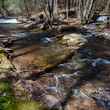
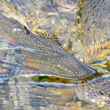
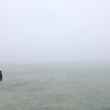
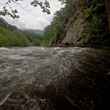



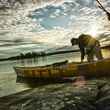
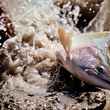



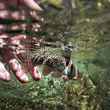
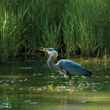



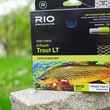
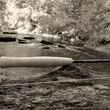



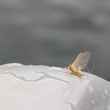
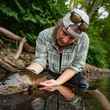

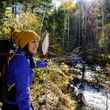
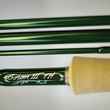
Comments
Bob DeMott replied on Permalink
Terrific piece, Tim!
Pages